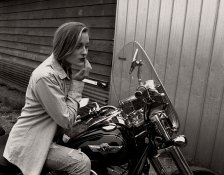hoffy
Member
Recently I have started a little project (maybe, who knows, I never go through with these things).
This project involves architecture photography. On the weekend I went to shoot a building, that's facing SSW*. In Australia, this pretty much means the front of the building will always be in shadow.
I decided to get up early to take it just after sunrise. Thankfully it was a bit overcast, so the light was (hopefully) OK. I metered it straight on.
It got me thinking - if I had travelled a long distance and it was a clear morning, how would have I metered it as to not blow out the sky? My thoughts would be to meter just for the shadows in the building and deal with it post later (whether digitally or under the enlarger).
I'm curious to understand how others handle this situation.
Cheers
*I'm assuming that for those in the norther hemisphere, it would equate to a building facing N to NNE
This project involves architecture photography. On the weekend I went to shoot a building, that's facing SSW*. In Australia, this pretty much means the front of the building will always be in shadow.
I decided to get up early to take it just after sunrise. Thankfully it was a bit overcast, so the light was (hopefully) OK. I metered it straight on.
It got me thinking - if I had travelled a long distance and it was a clear morning, how would have I metered it as to not blow out the sky? My thoughts would be to meter just for the shadows in the building and deal with it post later (whether digitally or under the enlarger).
I'm curious to understand how others handle this situation.
Cheers
*I'm assuming that for those in the norther hemisphere, it would equate to a building facing N to NNE









